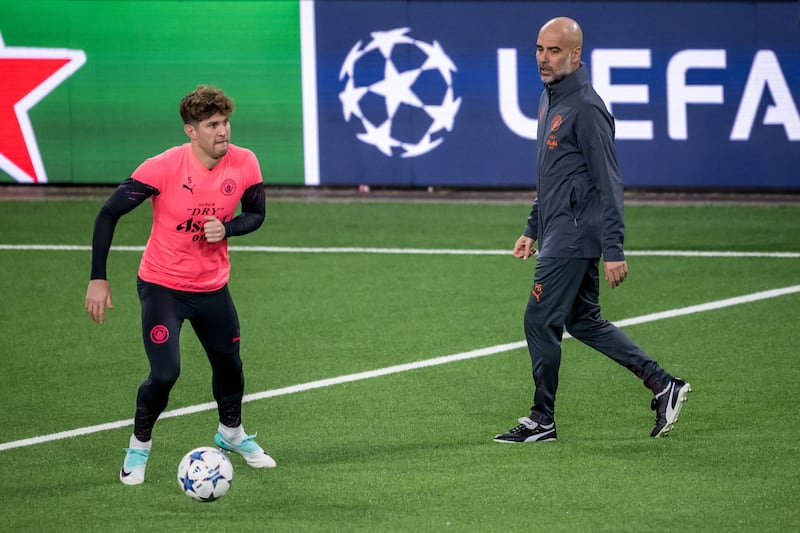Multi-position players have come a long way since Paul Warhurst was happy to fill in wherever required or Dion Dublin gave centre-back a go in the latter stages of his career.
The modern game possesses a new breed who can adapt within a game, moving roles in tune with their intuition and where they think they can make the biggest impact.
On Sunday Trent Alexander-Arnold was placed at right-back on the prematch graphic against Fulham, although that did not represent his afternoon’s work. As an inverted full-back he would appear in central midfield, looking to provide an overload, or he slotted between the centre-backs with the aim of getting on the ball and using his passing range to change the dynamic of an attack.
The purpose of Alexander-Arnold and his peers is to bring controlled chaos for teams that like to dominate possession.
Alexander-Arnold sums up his role as thus: “I think the way I see it and the way I am told and explained to play it [at Liverpool], it is almost when we have the ball I am a midfielder and when we don’t have the ball I am a right-back.”
Having a fourth player in central areas, like Liverpool had against Fulham, can help counteract any potential man-marking system an opponent is utilising in an attempt to foil attacks because they will feel the need to press the man in possession, freeing up another.
Claiming a team is playing a 4-3-3 or 4-2-3-1 is alarmingly simplistic for viewers of elite football. It is down to the ingenuity of a coach to create these specific roles, catering for the skill set of an individual and maximising their assets for the benefit of the team.
What John Stones does for Manchester City is very different from what Alexander-Arnold does for Liverpool and they could not be transposed.

When Stones was injured in November, Pep Guardiola announced “we are in trouble” because he knew how important the defender-cum-midfielder is for City.
Manuel Akanji stepped into the breach, although he is not at the same level as Stones when it comes to coping with the complexity of the role, while Rico Lewis has shown promise and could become fluent in this fluidity in the years to come.
Lewis has been brought through a modern academy. He was 11 when Guardiola arrived at City and put in place his blueprint showing how he was going to play, even though this has been adapted over time.
Coaches at age-group level at clubs across the world ensure their players get a varied education on the pitch and this often means experience of playing in numerous positions to form a greater understanding of what is required in positions they are not accustomed to.
A problem, however, is not how well the individual knows their role but their team-mates’ understanding of how they need to adapt to fill in when the player in question vacates their traditional position.
There were times when Alexander-Arnold’s shift into midfield allowed Fulham to break on Liverpool, capitalising on the space vacated at right-back, which is how their first goal was scored at Anfield.
Defenders need to be smarter when their colleague moves further forward to give them the best chance of stopping attacks because allowing any team a considerable amount of space is a dangerous game in the Premier League.
Only Virgil van Dijk had more touches than Alexander-Arnold at the weekend. Jürgen Klopp saw the influence Alexander-Arnold was having from his nominal right-back position and decided he could be more penetrative from central midfield and that it would help having Joe Gomez providing a more stable force at full-back, so made second-half substitutions.
It shows the faith the manager has in his player and the comfort that provides a confident Alexander-Arnold, who has now scored important late goals in his past two league appearances.
It is not only in defence where players roam. Hybrid wingers can bring a different shape to a team. Their aim is to be wide when a team is defending but be able to move inside to collect the ball in potentially more dangerous positions, while creating space for a full-back on the overlap.
The game will continue to evolve, especially with a collection of innovators at the top level, many taking inspiration from what Johan Cruyff did decades previously. They will influence their successors who will look at football from a different perspective and come up with other ideas to complement the current climate of tactical discourse that is moving the game forward.
As Alexander-Arnold, Stones and others prove, it is a concept that is reaping rewards for their coaches. For opponents, trying to stop someone with such a free role is difficult because it is hard to know where they will appear on the pitch, leading to players repeatedly questioning themselves in hope of staying ahead of the game
The next generation of players will see what is required. The roles take discipline, intelligence and immense technical quality. Strikers like Mohamed Salah and Erling Haaland are treated like gold dust but hybrid players will be worth their weight in precious metal.








